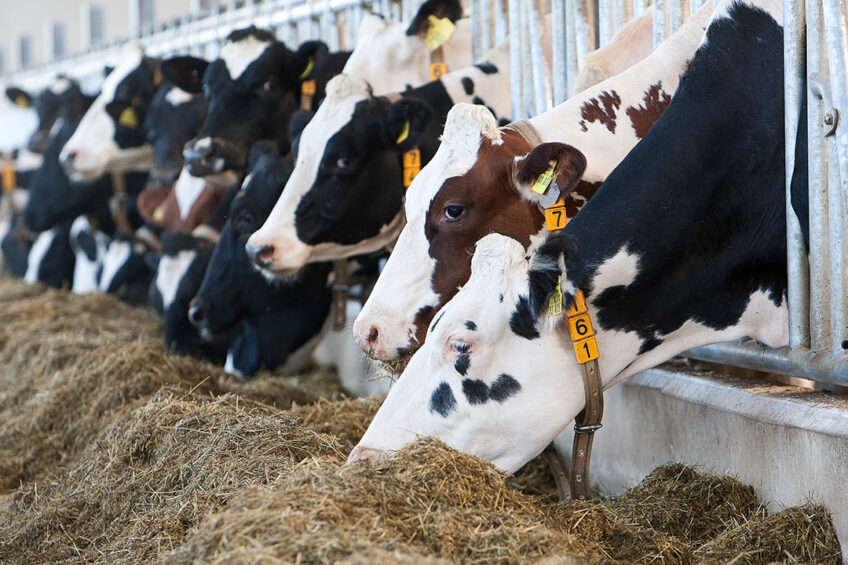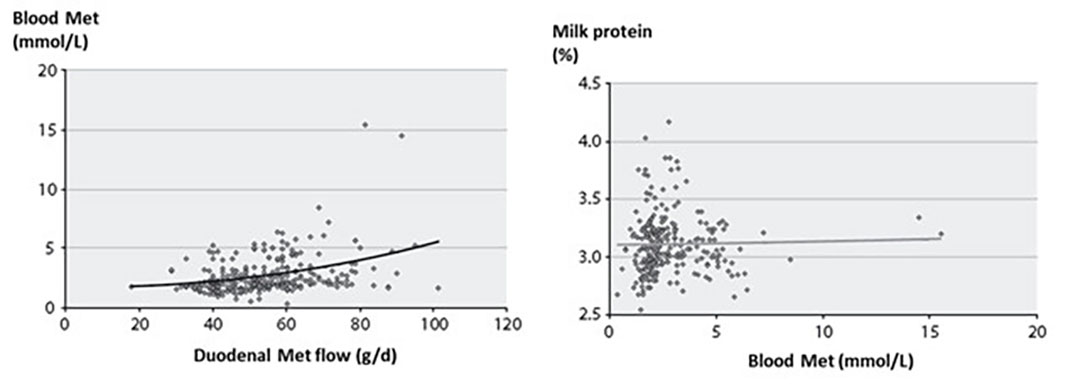Can methionine concentration in plasma be related to milk protein?

Methionine (Met) is, in most dairy rations, the first limiting amino acid for milk and milk protein production. The blood concentration of this amino acid is often used as a proxy for its bioavailability, assuming that changes in concentration are directly related to dietary variations.
However, since blood is a transport organ, concentrations of amino acids in blood do not only reflect the dietary supply, but also the amount used by the organs. Although in some studies blood amino acids have been shown to change in response to dietary manipulation, in most studies they appear to remain relatively constant.
Working with Nittany Dairy Nutrition, we conducted a meta-analysis to investigate the relationship between the predicted flow of Met at the duodenum and its blood concentration. In addition, we assessed the link between these two parameters and the production of milk protein.
Database and analyses
Data was collected from studies published in the Journal of Dairy Science and reporting sufficient information on dietary composition, dry matter intake, milk yield, milk protein percent and blood concentrations of Met. Studies where protein and/or amino acids were infused abomasally or duodenally were also included, assuming that 100% of the infused amino acids passed to the duodenum.
In total, we collected data from 66 studies representing 281 diets. Diets were entered into the AminoCow dairy formulation software (Evonik Operations GmbH) to predict metabolizable protein and duodenal amino acid flow in order to calculate Met flow as gramme per day or as a percent of metabolisable protein. The software has already been shown to accurately predict metabolisable protein and amino acids supply compared to other existing nutritional models. Statistical analyses of the relationship between duodenal Met flow, blood Met concentration and milk protein were conducted with scientifically rigorous models (Proc Mixed of SAS) after graphical observations.
Main results
Simple statistics for variables of interest in the database are presented in Table 1. With a mean DM intake of 20.3 kg/d, milk yield and milk protein averaged 30.2 kg/d and 3.11%, respectively. The relationship between the predicted flow of Met at the duodenum and its blood concentration may graphically appear linear (Figure 1), but owing to the high variability in blood Met for a given Met intestinal flow, the equation was statistically not significant. Likewise, blood concentration of Met had no relationship to milk protein expressed as % or daily yield.
Table 1 – Descriptive statistics of the database
Figure 1 – Relationship between duodenal Met flow and blood Met concentration (left), and blood Met concentration and milk protein (right).

Further investigation in progress
From these data, it appears that blood concentration of Met has no relationship to milk protein or to Met delivery at the duodenum. It appears that regardless of dietary supply, the animal attempts to maintain blood concentration of Met in a narrow range. We, therefore, question the use of amino acid concentration in blood as the sole measure of amino acid adequacy or change in supply. Further work is in progress to better understand these relationships including all essential amino acids. The first conclusions will be presented at ADSA 2022.
References are available from the authors upon request.
Join 13,000+ subscribers
Subscribe to our newsletter to stay updated about all the need-to-know content in the dairy sector, two times a week.










